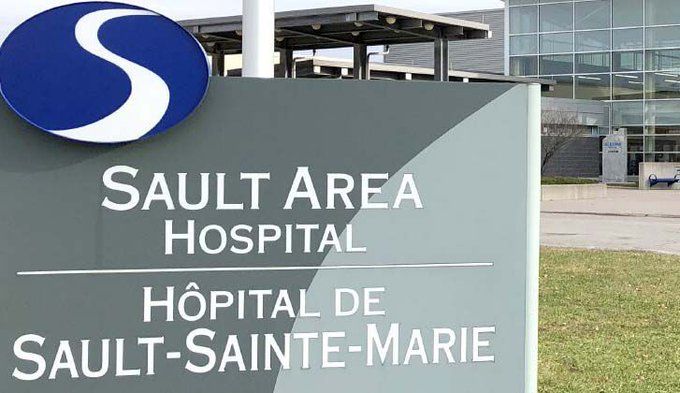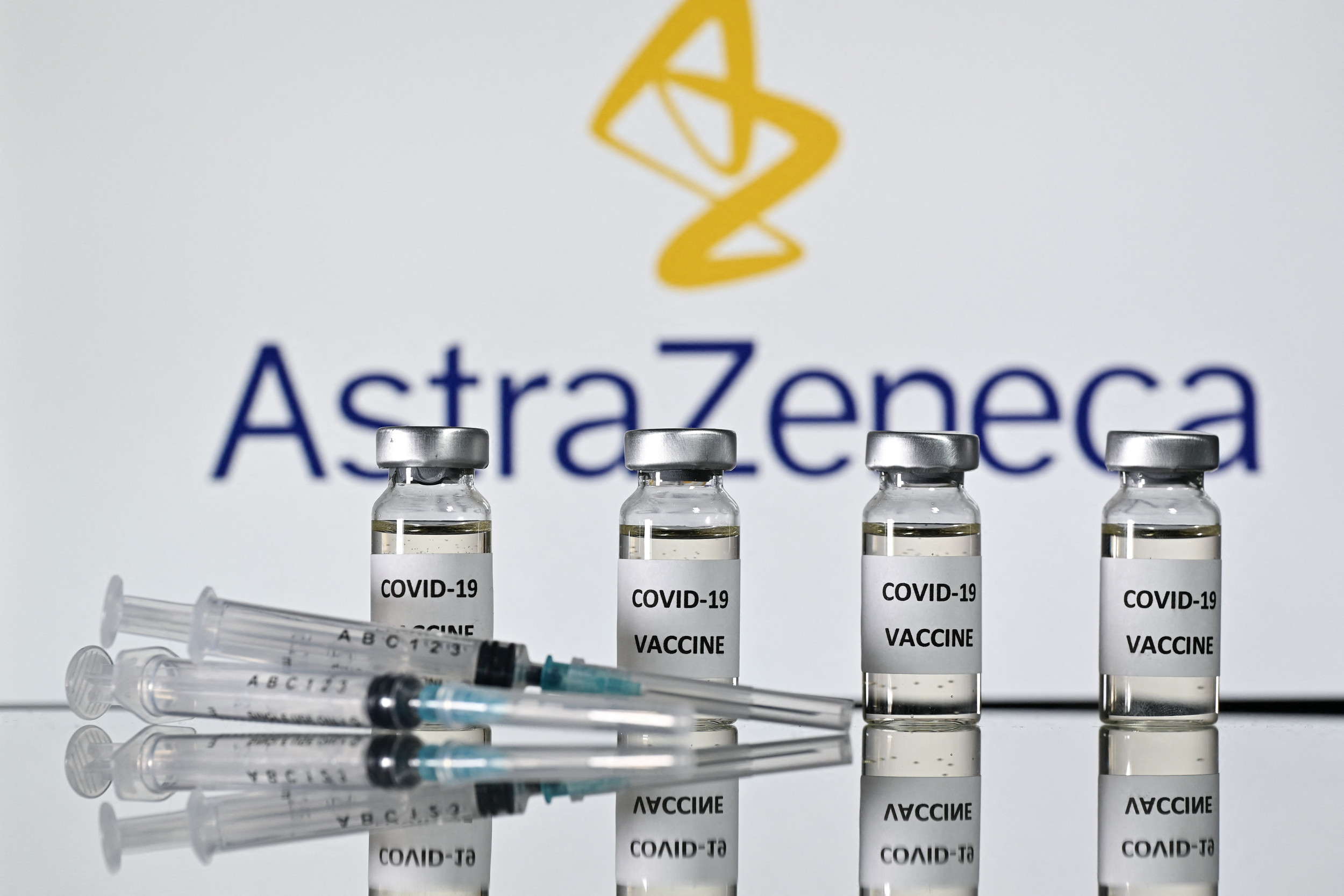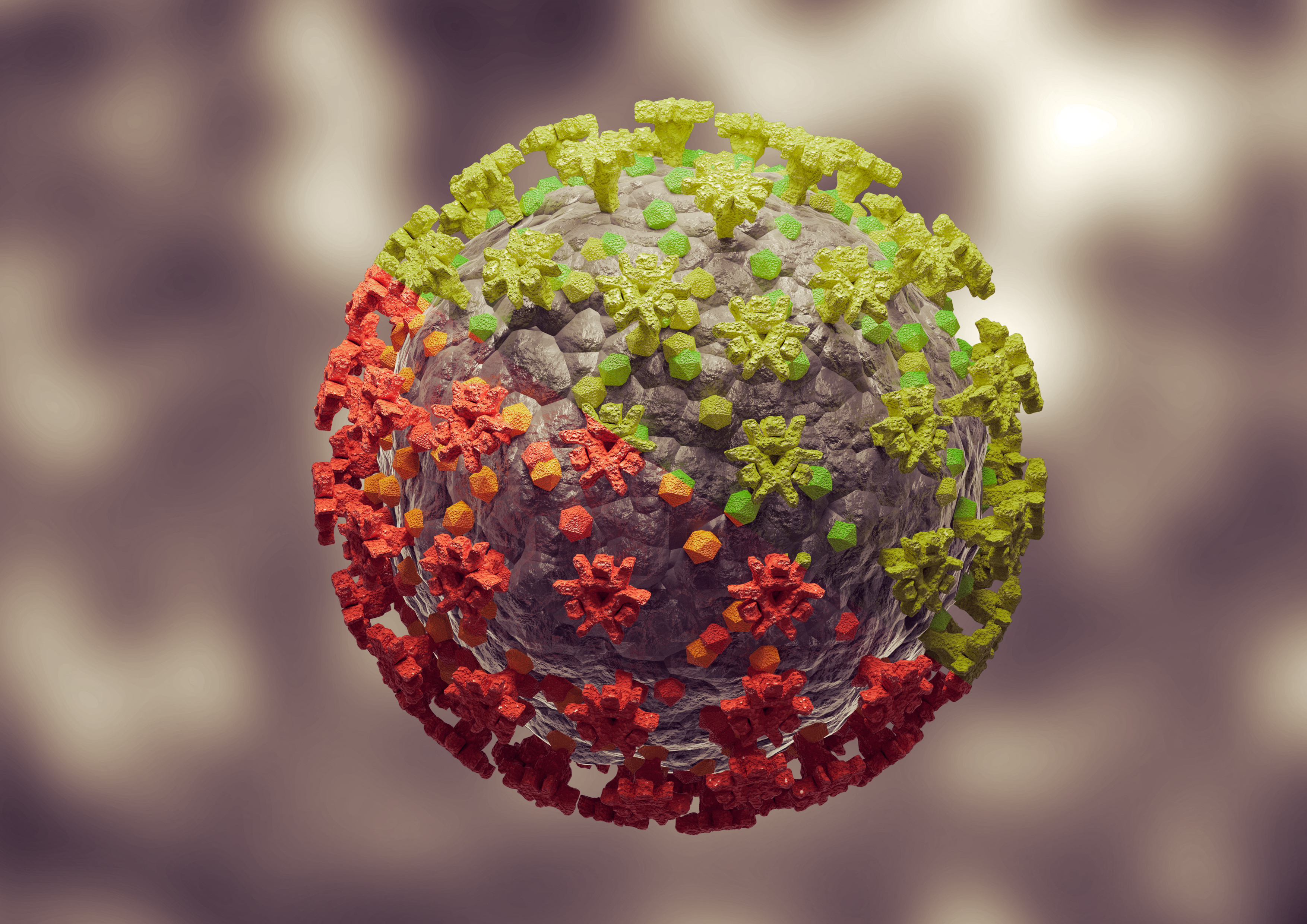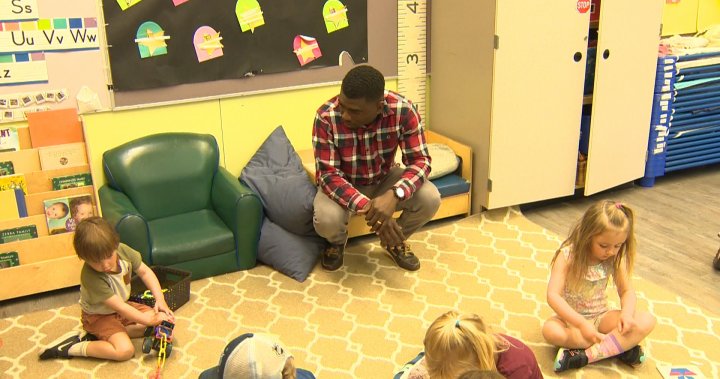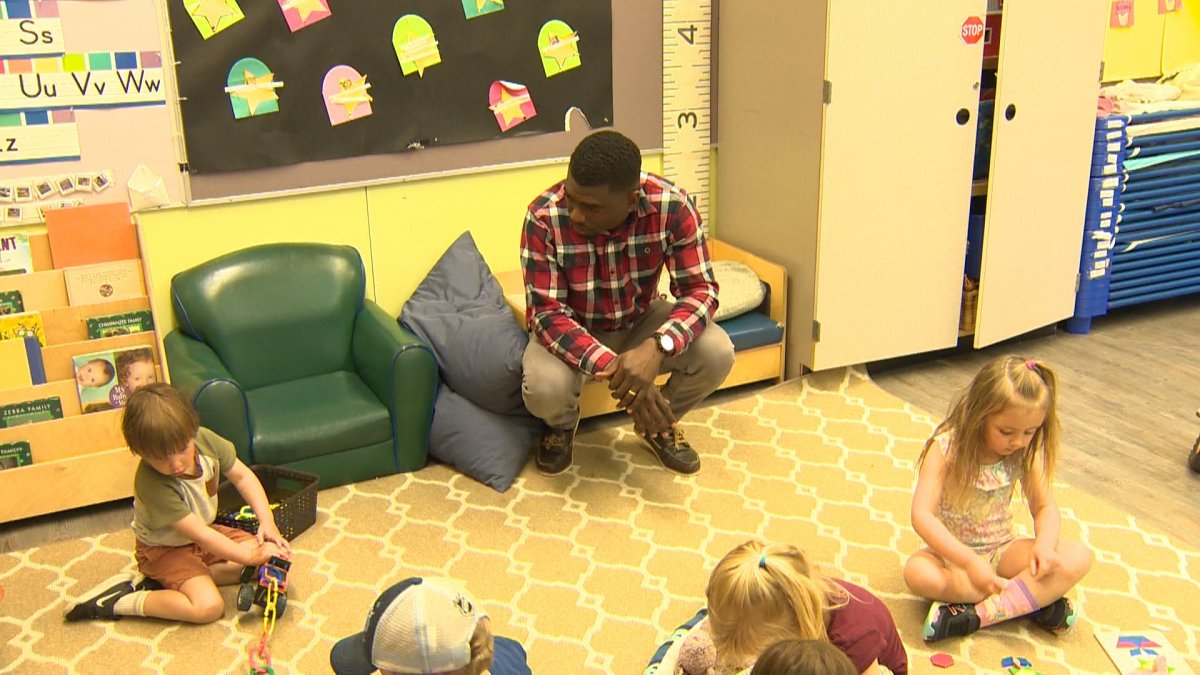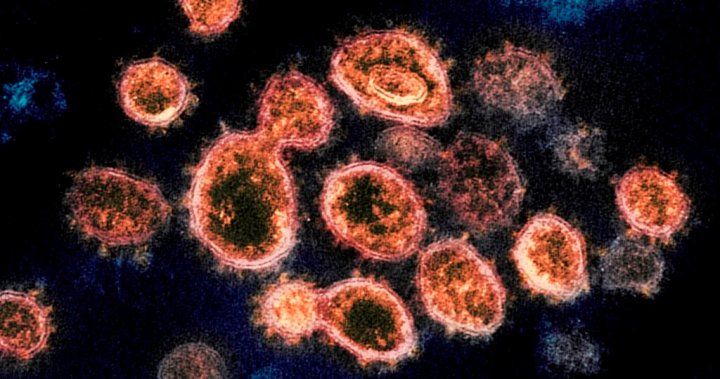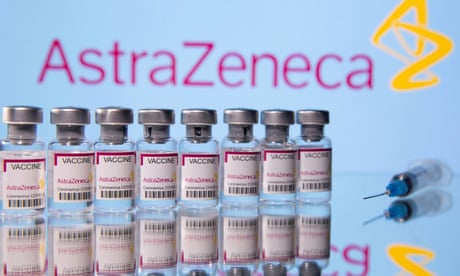UCP board urges Premier Danielle Smith to make COVID vaccine policy changes for children
Calgary riding hosting event with high-profile vaccine skeptics
Jason Markusoff,
Joel Dryden · CBC News · Posted: May 11, 2024 2:58 PM EDT | Last Updated: 3 hours ago
Medical practitioners have administered millions of COVID vaccine doses to Albertans, most of them the mRNA shots that are the target of a United Conservative group's upcoming speaker event. (Hannah Beier/Reuters)
Social Sharing
-
Facebook
-
X
-
Email
-
Reddit
-
LinkedIn
The United Conservative Party's board is urging Premier Danielle Smith to reform COVID vaccine policy because the directors are worried about the safety of mRNA vaccines for kids, the party president says.
"We have serious concerns about them for children," Rob Smith, the UCP president, told CBC News in an interview Friday.
"I would say that the board of directors' position is that if parents are going to get their children vaccinated, they need to be very, very sure that they know what they're doing."
Asked what the change would look like in practice, Rob Smith said it would see AHS "doing a better job of sharing information about the vaccine that they are offering."
He wants AHS to disclose "the science behind the vaccine, and the potential repercussions," as well as the research and the testing methodology behind it.
He said the board has communicated its concerns to the premier, adding "we believe that there will be action coming from the government with respect to AHS's offerings of COVID vaccinations and the ages for which they're recommending."
The party president's comments come as a Calgary wing of the UCP prepares to host a gathering of medical speakers who claim COVID vaccines are dangerous and even deadly, hoping to use that event to help persuade UCP MLAs and Smith to ban mRNA COVID immunizations for children.
Health Minister Adriana LaGrange's office declined to answer questions about this event and the United Conservatives' advocacy for vaccine restrictions.
The United Conservative Party's logo is included on a poster for the event that casts doubt on COVID vaccine safety. (Screengrab)
The town hall planned for June is hosted by the UCP riding association for Calgary-Lougheed, a southwest city district, along with its rookie MLA, Eric Bouchard. They are bringing in doctors and researchers from as far away as Texas and Ontario, including two whose medical colleges have sanctioned them for unprofessional conduct and for spreading falsehoods and misleading information about vaccines and COVID public health measures.
The goal of the event is to "persuade the UCP Alberta caucus to declare the moratorium on all COVID mRNA vaccines" for children in the province. That's a move that would set Alberta apart from the rest of Canada.
Currently, Alberta Health's
COVID information website says vaccines, including those that use messenger RNA technology, are "safe, effective and save lives," while the World Health Organization
recommends doses for children older than six months who are immunocompromised or have higher risk of severe COVID.
The organizers of the event "An Injection of Truth" take a dimmer view. Their advertisements allege the vaccines are likely contributing to an increase in deaths of Alberta minors. "Ask yourself, 'How can we help Albertans put a stop to COVID shots that kill children?'" the ticketing website states.
The president of the section of pediatrics for the Alberta Medical Association finds the claims "saddening" fringe views, informed by hearsay and innuendo.
Sam Wong said he has not read anything in official pediatrics or medical literature that supports views that mRNA vaccines are untested or dangerous for children.
"I can't see any drawbacks to the use of the mRNA vaccination in children or adults," Wong said.
"The broad view of pediatricians across Canada, of the infectious diseases group, is that the mRNA vaccinations are safe and effective."
'All-star' panel
The event boasts what organizers call an "all-star medical and expert panel."
Among the seven advertised speakers are Chris Shoemaker and Mark Trozzi, two Ontario doctors whose professional college suspended their licences due to allegations they each committed professional misconduct with their statements about COVID vaccinations and health measures.
Shoemaker, whose personal website declares a need to "save the children — end the vaxx," has had his licence suspended and was referred to the College of Physicians and Surgeons of Ontario
disciplinary tribunal last year.
The tribunal ordered Trozzi's registration certificate revoked earlier this year, after
finding him "incompetent" as well as unprofessional for comments that included "promoting a false narrative about 80 deceased doctors."
Trozzi has appealed that decision, and continues to post about COVID vaccines on social media and his Substack page.
"The greatest medical atrocities in history have been committed; with tens of millions of people killed and hundreds of millions injured," Trozzi wrote on Substack. "My mission is to stop COVID-19 crimes, bring the perpetrators to justice, and advance the treatment of the injured, providing education to recover their health, fertility, and longevity."
Calgary pediatric neurologist Eric Payne is also listed in advertisements for the event. In October 2021, Payne was one of four Alberta doctors
who launched a lawsuit against Alberta Health Services' mandatory workplace COVID-19 vaccination policy.
William Makis, another Alberta-based speaker who has raised concerns about the COVID vaccine, is also scheduled to appear.
None of the other speakers coming in are practicing physicians. All are prolific on social media with their claims about vaccine safety.
CBC News reached out to Trozzi, Payne, Shoemaker and Makis for comment.
"I look at all sides but stand comfortably on my educated opinion," Shoemaker wrote in an email response.
In a public response on social media to questions from CBC News, Makis said that he has been asked to speak to dozens of live events as a keynote speaker.
Lawyer Michael Alexander, a representative for Trozzi, said in an email that "Regardless of venue, Dr. Trozzi's goal is to engage others in seeking the truth about medical and scientific issues relating to COVID-19."
"Further, Dr. Trozzi does not ask anyone to 'trust' his views on mRNA genetic injections or anything else. He presents science-based information on his website and people are free to make up their minds about the injections."
CBC News has yet to receive a response from Payne.
In an interview, event organizer Darrell Komick said he's bringing in these speakers because they're the ones investigating and willing to speak about children's deaths and potential vaccine links.
"This isn't a bunch of crazed lunatics looking to be overly provocative," said Komick, president of the Calgary–Lougheed UCP association. "This is just people trying to ask a simple question."
Komick told CBC News that Florida and Japan have already banned mRNA vaccines for children, "based on science." In fact, neither has done so.
Florida's top health official has
openly questioned mRNA vaccine safety, but the immunizations remain available. Meanwhile,
misinformation about Japan and vaccines has
recently circulated on social media.
Adverse events
The Public Health Agency of Canada has
tracked adverse events reported following COVID vaccinations — including pain, headaches and more severe reactions. As of this January, it reported them at a rate of 40 per 100,000 doses for Canadian children four and under, with lower rates for children aged five to 17. Rates are slightly higher for most older age groups.
After more than 100 million COVID vaccinations administered, there have been 488 reports of deaths following vaccination in Canada. Officials assess four of those to be consistent with causal association with immunization. The rest are unlikely to be linked to the vaccine, indeterminate or not classifiable, according to the public health agency.
Dr. Lynora Saxinger, an infectious disease physician at the University of Alberta, said experts are frequently battling against comments made about safety that aren't supported by reputable sources of data.
"There's a lot of things that people attribute to vaccines, but they have to remember that at the moment, 5.5 billion people or more in the world have had a COVID vaccine," she said. "And every single health event that was going to happen in the world, had this never happened in a parallel universe without COVID, is still going to happen."
Also speaking at the event is Shane Getson, a United Conservative MLA from central Alberta. He has stated he was
"vaccine injured" following his first COVID immunization in 2021.
Rob Smith, the party's president, advertised this UCP constituency event last week in a monthly email to all party members.
In the regular newsletter, he reported the party's provincial board met with Premier Smith via Zoom in mid-April, and topics included "COVID vaccines for infants and children."
Premier Danielle Smith at a health-care policy announcement last year. One of her first acts as premier was to fire the province's chief medical officer of health, Dr. Deena Hinshaw. Smith had spent months criticizing her pandemic management. (Jason Franson/The Canadian Press)
The newsletter includes a full 778-word promotion for the event, encouraging non-Calgarians to watch via online streaming. It goes on to state: "Our objective is to remove COVID mRNA shots from the AHS childhood vaccination list.
"Please share the word; you are making a difference."
The UCP logo appears on the event's advertising materials. It offers tickets at a discounted price for United Conservative members, and is followed by a $159-a-ticket "politics and popcorn" political fundraiser where attendees can meet with United Conservative MLAs.
"I don't know that we're trying to change UCP policy," Komick said about his event's stated goals about reforming vaccine rules. "We're trying to effect change for kids. That requires AHS to change."
Not only would Alberta be unique among provinces if it restricted COVID vaccines for children or adults, but it would also depart from its own process if the UCP caucus directed such a decision.
COVID vaccination use in Alberta is ultimately determined by the Alberta Health ministry, so could technically be subject to political decisions from the minister, cabinet and UCP caucus.
However, that would be completely out of step with how vaccine decisions have long been made in the province: largely based on Health Canada vaccine approvals and recommendations from the National Advisory Committee on Immunization (NACI), as well as localized input from medical experts on the Alberta Advisory Committee on Immunization.
Rob Smith, president of the United Conservative Party, reported last week in a monthly email that the party's provincial board met with Premier Smith via Zoom in mid-April, and topics included 'COVID vaccines for infants and children.' (Facebook)
Premier Danielle Smith rode to popularity within the United Conservative base for her firm stance against COVID vaccine mandates and other public health decisions.
In 2021, before returning to politics, she
penned a column that said requiring people to take an mRNA vaccine may fly in the face of a post-World War II convention against forced human experiments.
Smith herself declined to get the widely available Pfizer or Moderna inoculations, choosing instead to
fly to Arizona to get a non-mRNA vaccine that wasn't available at the time in Canada. But in her 18 months as premier, her government has placed no restrictions on mRNA vaccination, and continues to administer them to Albertans as young as six months old.
The UCP government has struck a
special review of pandemic-era health data, and chose as its leader a doctor who accused the province of exaggerating COVID's impact on hospitals. Two people billed to appear at the June town hall — Payne and Jessica Rose — were initially appointed to that panel, but later withdrew, according to the
Globe and Mail.
"There are a couple of concerns that I have about the number of unexplained deaths. I wanted to know what was behind that," the premier said last week about that government panel.
While the event's website and promotional materials do not disclose the venue's site (unless one buys a ticket), CBC News confirmed that the town hall will be held at Southside Victory Church. That church was
fined in 2020 for holding services that violated public health rules that limited public gatherings.


